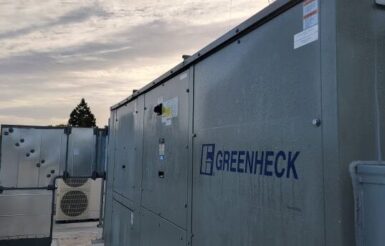Very high efficiency DOAS
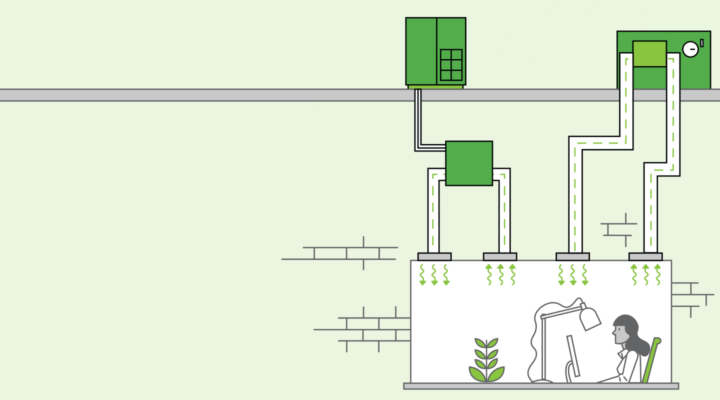
A proven approach to high-performance HVAC
The next step in the ongoing evolution of HVAC design, very high efficiency dedicated outside air systems (or very high efficiency DOAS) uses the most efficient HVAC equipment and key design principles to provide cleaner and safer indoor air, enhance indoor comfort, and reduce commercial building HVAC energy use by an average of 69% (when compared to a code-minimum system).
How it works
Benefits
-
Future-proof your building
Very high efficiency DOAS can protect your building against extreme weather events and ensure you’re meeting and exceeding future building performance standards or code requirements.
-
Improve indoor-air quality
Improves indoor air quality and reduces viral risk by using fresh and filtered air with little-to-no recirculation—all while using up to 37% less energy than a similar high-ventilation variable air volume (VAV) system.
-
Zonal control for improved comfort
Increases occupant comfort by improving temperature stability and allowing for zones with unique temperature controls.
-
Significantly reduce energy costs
Reduces energy costs and lowers overall building energy use by an average of 48% and HVAC energy use by an average of 69%.
Source: Twelve real-world demonstration projects by Northwest Energy Efficiency Alliance, as compared to code-minimum systems.
Resources
Designer resources
Sales tools
Research and reports
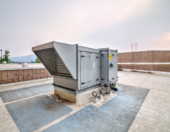
The best in gas and hybrid HVAC
Efficient RTUs offer easy one-to-one replacement of existing RTUs and savings of up to 40% on HVAC energy use. Learn more >
Frequently asked questions
What is very high efficiency DOAS?
Very high efficiency dedicated outside air systems (or very high efficiency DOAS) pair the highest performance HVAC equipment with key design principles to provide cleaner and safer indoor air, enhance indoor comfort, and reduce commercial building HVAC energy use. Very high efficiency DOAS consists of the following key elements:
- A high efficiency HRV/ERV that features 82% or greater sensible effectiveness.
- High-performance heating and cooling system that meets ENERGY STAR® performance standards.
- Ventilation fully separated from heating and cooling.
- Right-sized heating and cooling equipment.
To learn more about the system requirements, recommendations, and compliant systems, view the Equipment & Design Best Practices.
Who developed the very high efficiency DOAS design?
The very high efficiency DOAS approach to HVAC design was developed by nonprofit Northwest Energy Efficiency Alliance (NEEA).
A culmination of over a decade of research, market analysis, and demonstration project installations, the system design and its requirements have been refined to decrease energy consumption, improve indoor-air quality, and improve occupant comfort over conventional systems.
What is a dedicated outside air system, or DOAS?
The term DOAS can mean different things to different people in the commercial building industry.
For the purpose of this system design, NEEA defines a dedicated outside air system (DOAS) as an HVAC system design or approach that consists of two key components or pieces of equipment:
- A ventilation system that brings fresh air into a building.
- An independent, i.e., fully decoupled, heating and cooling system.
This system design provides buildings and their occupants with improved indoor air quality, reduced energy use, and cost savings.
What are the benefits of fully decoupling the heating and cooling from the ventilation?
Separating the ventilation from the heating and cooling system is a key component to making very high efficiency DOAS the most efficient and effective HVAC approach available. And while all DOAS configurations are at least partially decoupled to provide some level of reduced fan power and improved air quality, the very high efficiency DOAS approach enhances these benefits to an exemplary degree. The most profound benefits come from complete decoupling, in which the heating and cooling airflow is never in contact with ventilation airflow, including:
- Reduced system fan energy, due to:
- Less distance to move air.
- Separate and optimized control of ventilation and heating/cooling fans, allowing each to operate less often.
- DOAS equipment uses smaller, more efficient fans.
- Better indoor air quality, due to:
- Increased ease of ventilation airflow measurement.
- Allows for more control and efficiency when higher ventilation rates are needed (i.e., during flu season).
- Smaller duct sizes (note: fully decoupled systems often require more supply diffusers).
What does it mean to “right size” your heating and cooling equipment?
Right sizing one’s HVAC system means ensuring that your system is the best size (and not oversized) to meet the energy demands of your building.
While conventional practice can lead to HVAC systems that are oversized by 25% or more, a very high efficiency approach to DOAS design often allows for the downsizing of heating and cooling systems through ventilation heat recovery and by decoupling ventilation from the primary heating and cooling equipment. In fact, when combined with accurate thermal-load calculations, the very high efficiency DOAS approach can reduce HVAC system size by an average of 32%, as proven by recent real-world field studies.
How does very high efficiency DOAS compare to DOAS in Washington State Energy Code?
Dedicated outside air systems (DOAS) with heat recovery ventilation are now required in some jurisdictions, including Washington State Energy Code (WSEC). To learn how these requirements compare to and differentiate from very high efficiency DOAS, watch our brief video and/or download a comparison chart here.
Case studies
Historic building leaves energy waste and toxic air in the past

Lewis & Clark student center blazes new trail to HVAC efficiency
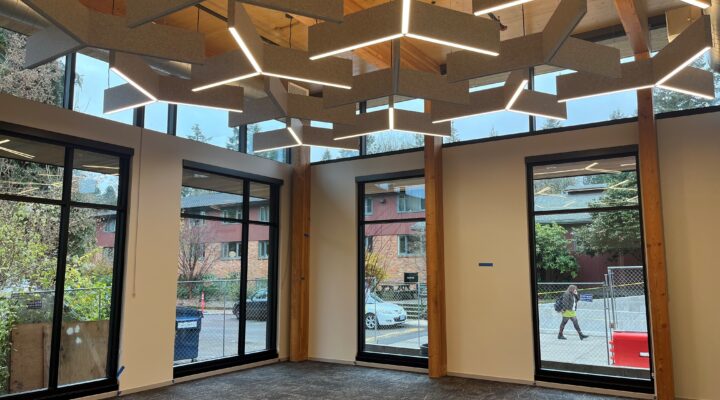
New-school HVAC approach improves comfort and air quality for K-12 students
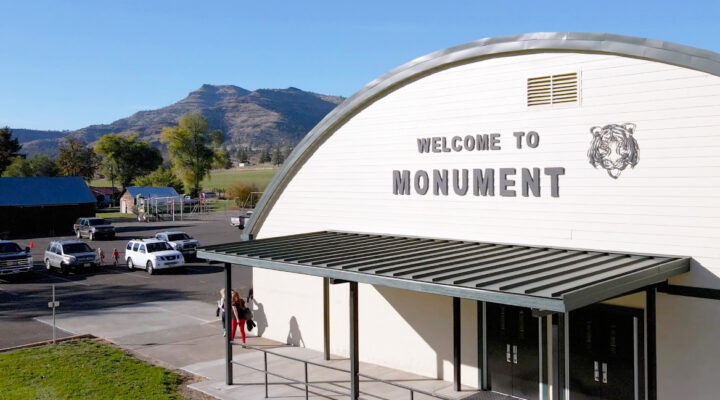
Preschool prioritizes healthy, mindful HVAC decisions

Portland law office objects to inefficient HVAC
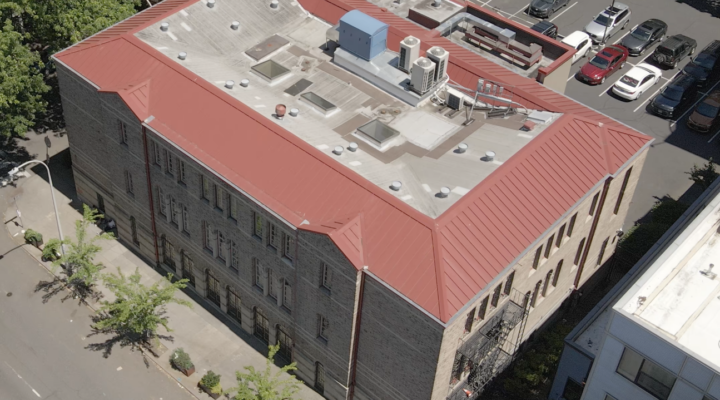
Portland firm engineers thermal comfort and HVAC efficiency
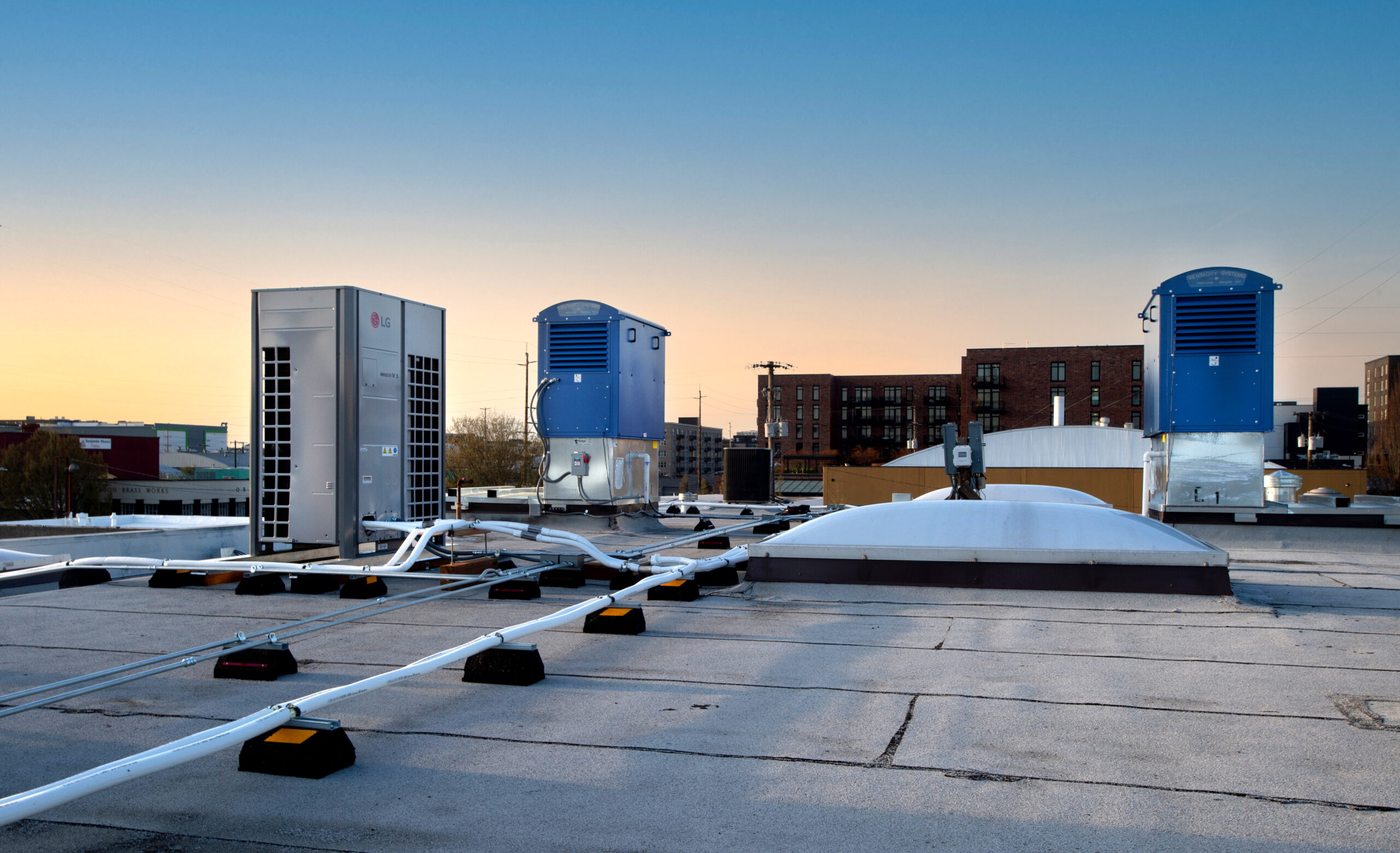
Research firm engineers a smaller energy footprint

Innovative HVAC approach helps airport’s energy savings take off

HVAC in the news

Boosting school brainpower and health through optimized HVAC
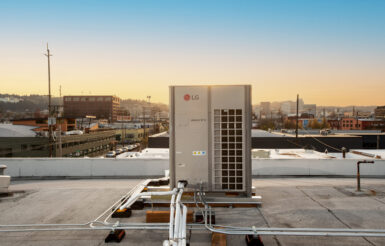
The proven persistence of very high efficiency dedicated outdoor air systems
